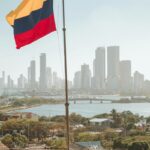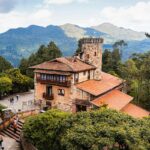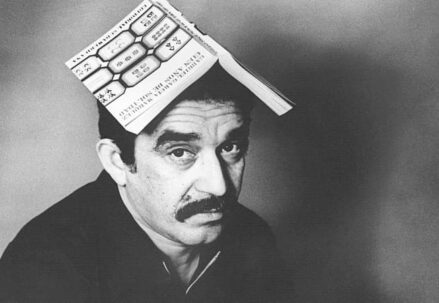Colombia is a colorful, beautiful country with a rich history. The expanses of the Andes and its many islands offer both European colonial heritage and authentic indigenous culture. Due to its climatic and geographical diversity, each department of Colombia has its own unique atmosphere – so you’ll want to visit every corner of the country!
San Agustin
The small town of San Agustin, located in the Andes, is actually an important cultural monument in Colombia. The pre-Columbian art of the indigenous people of San Agustin is perfectly preserved here. Impressive huge monoliths and stone carvings reveal the history of a culture that originated in this region at least in the fourth millennium BC. In 1995, the San Agustin Archaeological Park, created around the town, became a UNESCO World Heritage Site.
Tayrona National Park
Tayrona is a huge national park of over 200 square kilometers located near the city of Santa Marta. It features a diverse flora and fauna endemic to the Sierra Nevada de Santa Marta region – about three hundred species of birds and more than a hundred species of mammals can be seen in the territory of Tayrona. Moreover, not only the land belongs to the park – the coastal waters are also protected by law. And no wonder, because it has its own coral relief, which is almost unique in the Caribbean region of Colombia.
Medellín
Medellín is the second largest and most popular city in Colombia. It is located in the department of Antioquia, which in turn is located in the north of the Andes in the Aburra Valley. Because of this, Medellín is often called the “Capital of the Mountains”. The city was founded in 1616, and by the middle of the century began to grow thanks to the gold deposits of Antioquia. After Colombia’s independence in 1810, Medellín became the center of cocoa bean exports, and it was important until the end of the 19th century. In the late 20th century, Medellín became infamous for drug lord Pablo Escobar and its disappointing crime statistics.
Cartagena de Indias
One of Colombia’s largest ports, Cartagena is located on the country’s northern coast. Officially, the city, named after its Spanish namesake, was founded in 1533, but indigenous Indian settlements were here as early as 4000 BC. Cartagena quickly became a key point between the New and Old Worlds – from here gold mined in America was exported to Spain. Of course, such fame could not but attract the attention of pirates, among whom was the famous traveler Francis Drake. Today Cartagena is the fifth largest urban agglomeration in Colombia, full of colonial-era architecture with Andalusian roots. In addition to its many Catholic cathedrals and churches, it’s also worth checking out the chic theaters, libraries and the Gold Museum.
San Andres
San Andres Island is an interesting geopolitical point on the map of the Americas. Politically it is tied to Colombia, and historically it has a close connection to Britain – settlers from England and Wales arrived on the island in the 17th century. Even today, the official languages of the region are Spanish, English, and Raisal Creole, spoken by the indigenous people. Together with the island of Providencia and a number of smaller islands, San Andres forms an entire department of Colombia. Although the island is located almost 800 kilometers from the northwest coast of Colombia, this place is loved by many due to its remoteness and tropical nature. For example, Johnny Cay Island is home to a coconut plantation, and Haines Island with its many colorful fish in the coastal waters regularly attracts divers.
Cartagena’s Old Town
The main attraction of ancient Cartagena is its Old Town, which includes the fortified historic neighborhoods of El Centro and San Diego. The local colonial architecture, from churches with convents to mansions with their famous overhanging balconies, is considered some of the best preserved in all of the Americas. It’s no wonder Old Town, with its lively streets, amazing buildings and many local restaurants, is so beloved by tourists. You’ll need a few days to fully explore this UNESCO World Heritage Site – follow the example of the locals and enjoy the views at a leisurely pace.
Bogotá
Bogotá is the real heart of Colombia, which is not only considered the political, economic and industrial center of the country, but is also a separate administrative unit. The name of Colombia’s capital reflects its history. “Bogota” doomed the Indian settlement of Bacata by Spanish colonizers, who founded the city in the 16th century. At that time Bogota was located between two cities – modern Funza and Cota. There are still debates about what the word itself means: most linguists and historians believe that “bacata” means “fenced land behind the fields” in the language of the Chichba Indians. However, there is a theory that Bacata was named after a Cacique Indian chief who dominated the land before the arrival of the Spanish colonizers.
Villa de Leyva
The town of Villa de Leyva is located about 20 kilometers from the capital of the department, Tunha. The journey from Bogotá will take about two and a half hours by car. This place is notable for its location – the city is spread out in a high semi-desert valley, far from the major commercial arteries of Colombia. Thanks to this, Villa de Leyva can still boast of its unspoiled colonial architecture and typical buildings: many buildings date back to the 16th century, and the roads and the large central square are still paved with cobblestones. Besides the town itself, tourists often stop by the surrounding countryside.





